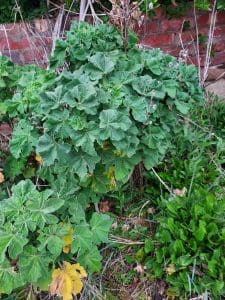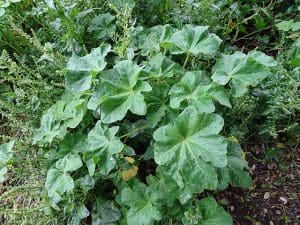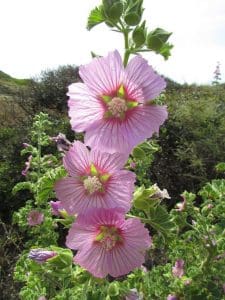Sea Mallow / Spring / Summer / Autumn / Edible
Sea Mallow, is a common coastal perennial with distinctive features. Native to coastal regions, it’s often grown as an ornamental inland and is loved by pollinators.
Common Names
Sea Mallow, Tree Mallow
Botanical Name
Malva arborea
Scientific Classification
Kingdom – Plantae
Order – Malvales
Family – Malvaceae
Physical Characteristics for Sea Mallow
This is a fantastic looking plant, it can be found appearing to crawl along the floor or standing up really tall. The bright flowers can also get to a really good size.
Leaves
This majestic plant has large, lobed leaves with a velvety texture. The leaves are heart-shaped and have gently toothed edges. The plant grows in a shrub-like form, reaching several feet in height.
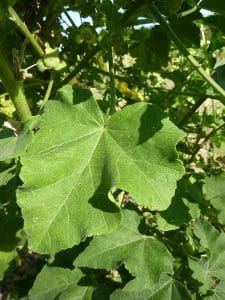
Flowers
The flowers of this plant are usually pink or lavender, with five petals forming a saucer-like shape. The flowers cluster at the ends of sturdy stems, providing a real burst of colour.
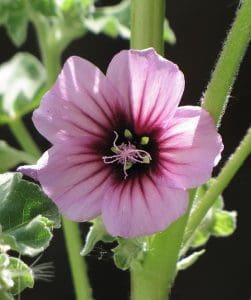
Habitat
Sea Mallow thrives in coastal environments and is most often found on sandy shores or cliffs., but can be found in many gardens inland. It can be an annual or biannual but in more sheltered locations it is a perennial. The stems crack easily and so plants in windy sites tend to suffer.
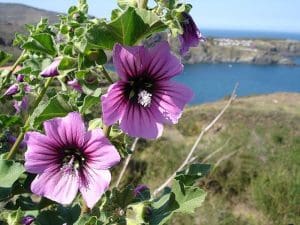
Known Hazards
Contact with the sap of the plant may cause skin irritation in sensitive individuals. It’s advisable to wear gloves when handling Sea Mallow if you have sensitive skin.
Could be Confused with…
Sea Mallow has quite distinct features, but it may be confused with other members of the Mallow family but these are also edible.
It could possibly be confused with certain Geranium species as the leaves are similar but Geraniums have a distinct aroma and different flowers.
Edible Uses of Sea Mallow
All parts of this plant are edible, offering a mild, pleasant taste.
The leaves can be used raw in salads or cooked as a nutritious green.
Flowers make a lovely addition to salads or desserts, adding a nice touch of colour.
I’ve also stuffed the larger flowers a bit like stuffed courgette flowers – YUM!
Notes on Herbal Uses
Sea Mallow has many historical uses as a medicinal herb. The leaves were historically employed for their potential soothing properties, often used topically to alleviate skin irritations or burns. Additionally, some extracts of Sea Mallow were used for respiratory issues, as it was believed to have mild expectorant qualities.
Extra notes from the Foragers
The marshmallow confectionery originally used the sap from the Marshmallow plant (Althaea officinalis) as a key ingredient. While Sea Mallow is not the same plant, it is closely related, hence the name.



